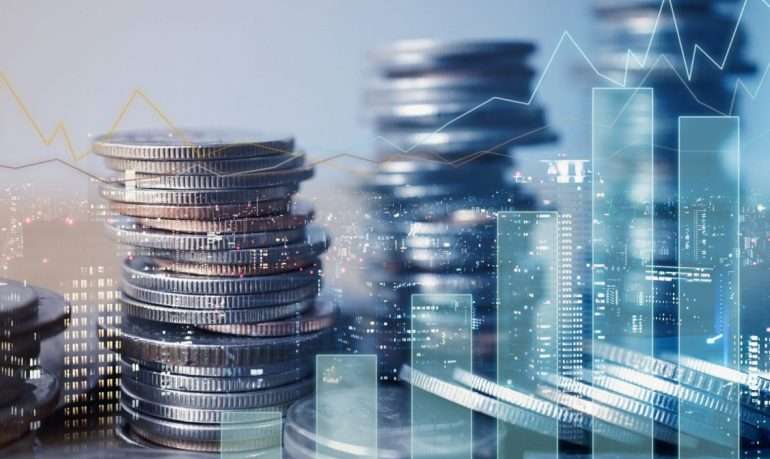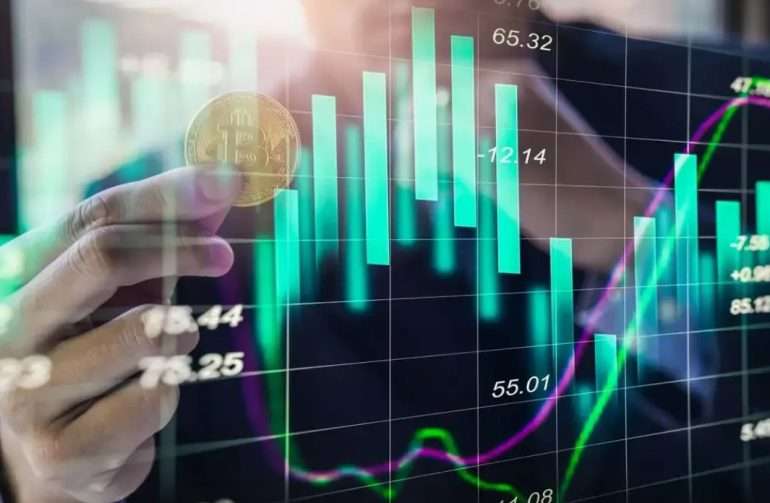Investing can feel like navigating a complex maze, especially when considering precious metals like gold and silver. These metals have captivated investors for centuries, often seen as safe havens during times of economic uncertainty. But are they always a good investment? Understanding the nuances of the gold and silver market is crucial before allocating your capital. This article delves into the pros and cons of investing in these precious metals, providing a comprehensive guide to help you make informed decisions.
Understanding Gold and Silver’s Investment Potential
Gold and silver have intrinsic value and are often used as a hedge against inflation and currency devaluation. However, their performance can vary significantly depending on various economic factors.
Gold’s Role as a Safe Haven Asset
Gold is often considered a safe haven asset because its value tends to hold up or even increase during economic downturns. This is because investors flock to gold when they lose confidence in traditional assets like stocks and bonds. However, gold doesn’t always perform well, especially if interest rates are rising.
Silver’s Dual Role: Investment and Industrial Metal
Silver has a dual role as both an investment asset and an industrial metal. While it also serves as a hedge against inflation, its price is more volatile than gold due to its industrial applications. Demand for silver is heavily influenced by industries like electronics, solar panels, and photography.
Comparing Gold and Silver: Key Differences for Investors
Here’s a comparison table outlining the key differences between gold and silver as investments:
| Feature | Gold | Silver |
|---|---|---|
| Role | Safe Haven Asset, Store of Value | Investment Asset & Industrial Metal |
| Volatility | Generally Less Volatile | More Volatile |
| Price Drivers | Economic Uncertainty, Inflation, Interest Rates | Economic Growth, Industrial Demand, Inflation |
| Liquidity | Highly Liquid | Liquid, but potentially less so than gold |
| Storage | Easier to Store (higher value per unit) | Requires more storage space (lower value per unit) |
Advantages and Disadvantages of Precious Metal Investments
Before investing, consider the following pros and cons:
- Advantages:
- Hedge against inflation and currency devaluation.
- Portfolio diversification.
- Tangible assets.
- Potential for price appreciation.
- Disadvantages:
- Volatility (especially silver).
- No inherent income (no dividends or interest).
- Storage costs.
- Subject to market speculation.
Different Ways to Invest in Gold and Silver
- Physical Bullion: Buying gold or silver coins, bars, or rounds.
- ETFs (Exchange-Traded Funds): Investing in funds that track the price of gold or silver.
- Mining Stocks: Investing in companies that mine gold or silver.
- Futures Contracts: Agreeing to buy or sell gold or silver at a future date and price (high risk).
FAQ: Frequently Asked Questions about Gold and Silver Investing
Q: Is gold a good investment for beginners?
A: Gold can be a relatively safe investment for beginners, especially in small quantities. However, it’s important to understand the market and consider diversifying your portfolio.
Q: Is silver a better investment than gold?
A: Neither is inherently “better.” Silver offers higher potential returns but also carries more risk due to its industrial uses and higher volatility. Your investment goals and risk tolerance should guide your decision.
Q: How much of my portfolio should be in gold or silver?
A: Most financial advisors recommend allocating a small percentage of your portfolio (5-10%) to precious metals like gold and silver.
Q: What are the costs associated with investing in physical gold and silver?
A: Costs can include premiums over spot price, storage fees, and insurance.
Q: Where can I buy gold and silver bullion?
A: You can purchase bullion from reputable dealers, online retailers, and some banks.
Investing in gold and silver can be a strategic move to diversify your portfolio and hedge against economic uncertainty. However, it’s crucial to understand the unique characteristics of each metal and their potential risks and rewards. Gold, often seen as a safe haven, provides stability, while silver offers higher potential returns with increased volatility. Before investing, carefully consider your investment goals, risk tolerance, and consult with a financial advisor. Remember, a well-diversified portfolio is key to long-term financial success. By understanding the dynamics of the precious metals market, you can make informed decisions and potentially benefit from these enduring assets.
Investing can feel like navigating a complex maze, especially when considering precious metals like gold and silver. These metals have captivated investors for centuries, often seen as safe havens during times of economic uncertainty. But are they always a good investment? Understanding the nuances of the gold and silver market is crucial before allocating your capital. This article delves into the pros and cons of investing in these precious metals, providing a comprehensive guide to help you make informed decisions.
Gold and silver have intrinsic value and are often used as a hedge against inflation and currency devaluation. However, their performance can vary significantly depending on various economic factors.
Gold is often considered a safe haven asset because its value tends to hold up or even increase during economic downturns. This is because investors flock to gold when they lose confidence in traditional assets like stocks and bonds. However, gold doesn’t always perform well, especially if interest rates are rising.
Silver has a dual role as both an investment asset and an industrial metal. While it also serves as a hedge against inflation, its price is more volatile than gold due to its industrial applications. Demand for silver is heavily influenced by industries like electronics, solar panels, and photography.
Here’s a comparison table outlining the key differences between gold and silver as investments:
| Feature | Gold | Silver |
|---|---|---|
| Role | Safe Haven Asset, Store of Value | Investment Asset & Industrial Metal |
| Volatility | Generally Less Volatile | More Volatile |
| Price Drivers | Economic Uncertainty, Inflation, Interest Rates | Economic Growth, Industrial Demand, Inflation |
| Liquidity | Highly Liquid | Liquid, but potentially less so than gold |
| Storage | Easier to Store (higher value per unit) | Requires more storage space (lower value per unit) |
Before investing, consider the following pros and cons:
- Advantages:
- Hedge against inflation and currency devaluation.
- Portfolio diversification.
- Tangible assets.
- Potential for price appreciation.
- Disadvantages:
- Volatility (especially silver).
- No inherent income (no dividends or interest).
- Storage costs.
- Subject to market speculation.
- Physical Bullion: Buying gold or silver coins, bars, or rounds.
- ETFs (Exchange-Traded Funds): Investing in funds that track the price of gold or silver.
- Mining Stocks: Investing in companies that mine gold or silver.
- Futures Contracts: Agreeing to buy or sell gold or silver at a future date and price (high risk).
A: Gold can be a relatively safe investment for beginners, especially in small quantities. However, it’s important to understand the market and consider diversifying your portfolio.
A: Neither is inherently “better.” Silver offers higher potential returns but also carries more risk due to its industrial uses and higher volatility. Your investment goals and risk tolerance should guide your decision.
A: Most financial advisors recommend allocating a small percentage of your portfolio (5-10%) to precious metals like gold and silver.
A: Costs can include premiums over spot price, storage fees, and insurance.
A: You can purchase bullion from reputable dealers, online retailers, and some banks.
Investing in gold and silver can be a strategic move to diversify your portfolio and hedge against economic uncertainty. However, it’s crucial to understand the unique characteristics of each metal and their potential risks and rewards. Gold, often seen as a safe haven, provides stability, while silver offers higher potential returns with increased volatility. Before investing, carefully consider your investment goals, risk tolerance, and consult with a financial advisor. Remember, a well-diversified portfolio is key to long-term financial success. By understanding the dynamics of the precious metals market, you can make informed decisions and potentially benefit from these enduring assets.
The Alchemist’s Perspective: Transmuting Fear into Fortune
Forget the charts, the analysts, the whispering heads on television. Let’s consider gold and silver through the lens of the alchemist. For centuries, they sought to transmute base metals into gold, a symbol of perfection, purity, and enduring value. Perhaps we can transmute our fears about the future into a more stable financial foundation with these very elements. Imagine your portfolio not as a collection of stocks and bonds, but as a crucible, slowly refining your financial destiny. Gold and silver become the catalysts, the elements that resist corruption and hold their value even when the world seems to be dissolving around them.
The Silver Lining of Innovation: Beyond the Safe Haven
While gold basks in its reputation as a safe haven, consider silver’s potential as the unsung hero of the technological revolution. It’s not just a pretty metal; it’s a vital component in solar panels, electric vehicles, and countless electronic devices. As we race towards a greener future, demand for silver is poised to skyrocket. Think of it as planting a seed in the fertile ground of innovation, a bet on the technologies that will shape tomorrow. Are you investing in silver, or are you investing in the future itself? The lines are becoming increasingly blurred.
A Word of Caution: The Siren Song of Speculation
But tread carefully, adventurer! The lure of quick riches can be intoxicating. Like the alchemist who loses himself in the pursuit of gold, forgetting the underlying principles, investors can fall prey to market hype and speculation. Remember that even the most precious metals are not immune to volatility. Diversification remains your shield, knowledge your sword. Don’t let the glitter blind you; approach the market with wisdom and a long-term perspective. Consider your precious metal investments as a piece of a larger tapestry, woven with threads of various colors and textures, creating a balanced and resilient whole.
Beyond Investment: A Legacy of Value
Ultimately, investing in gold and silver can be about more than just financial gain. It can be about creating a legacy, a tangible store of value that transcends generations. Imagine passing down a collection of gold coins to your grandchildren, not just as an inheritance, but as a symbol of enduring worth, a reminder that some things retain their value even in the face of change. It’s about owning a piece of history, a fragment of the earth’s ancient treasures. Perhaps the true alchemy lies not in transmuting metals, but in transmuting the anxieties of the present into a future of security and lasting value.
So, is gold and silver always a good investment? The answer, as with all things in life, is nuanced and depends on your individual circumstances and perspective. But by understanding their unique properties, considering their role in the broader economy, and approaching the market with a blend of caution and foresight, you can unlock the potential of these precious metals and navigate the financial landscape with greater confidence and purpose. Now, go forth and forge your own golden path!




